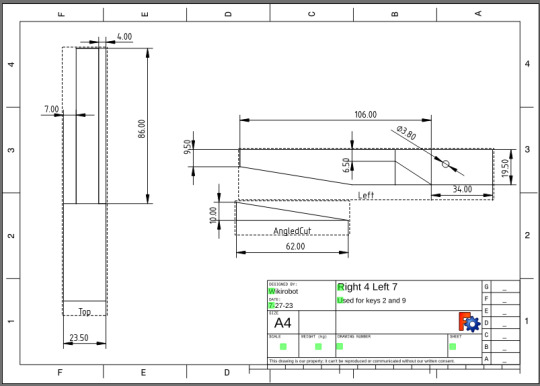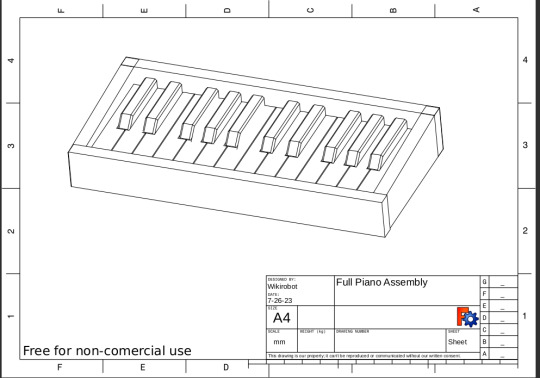#woodworking guide
Explore tagged Tumblr posts
Text
Mastering Advanced Woodworking Techniques
Woodworking is an art form that has been practiced for centuries, with its roots dating back to ancient civilizations. From building shelters to creating intricate furniture pieces, woodworking has evolved into a fine craft that requires skill, patience, and precision. While many enthusiasts may have some experience with basic woodworking techniques, mastering advanced techniques is crucial for those looking to take their craftsmanship to the next level. In this article, we will delve into the world of advanced woodworking techniques, exploring the various methods and skills that can elevate one's woodworking skills to a professional level. Whether you are a seasoned woodworker or just starting out, this guide will provide valuable insights and tips on how to master advanced woodworking techniques and create stunning, one-of-a-kind pieces that will stand the test of time. So, let's sharpen our tools, roll up our sleeves, and dive into the world of advanced woodworking techniques.
Precision cuts: achieving flawless edges
Achieving precise, flawless edges is a crucial aspect of mastering advanced woodworking techniques. It requires a combination of skill, patience, and the right tools to achieve the desired results. Whether you are working with wood, metal, or other materials, the ability to make precise cuts is essential for creating high-quality, professional-level pieces. In this article, we will delve into the importance of precision cuts and offer tips and tricks to help you achieve flawless edges in your woodworking projects. By mastering this fundamental aspect of woodworking, you will be able to take your craft to the next level and create truly exceptional pieces.
Joinery mastery: perfecting complex connections
In addition to achieving precise edges, mastering complex connections is another essential skill for advanced woodworkers. These connections, such as dovetail joints and mortise and tenon joints, require a high level of precision and attention to detail. One small mistake can affect the overall stability and strength of the piece. By perfecting these complex connections, woodworkers can elevate their craftsmanship and create truly impressive and durable pieces. In this article, we will discuss techniques and strategies for mastering these advanced woodworking techniques and taking your skills to the next level.
Advanced shaping techniques: sculpting intricately
Another crucial aspect of advanced woodworking is mastering the art of intricate sculpting. This involves using different tools and techniques to create intricate and detailed designs on wood surfaces. It requires a high level of precision and control, as well as a deep understanding of how different types of wood respond to various shaping methods. By mastering intricate sculpting, woodworkers can take their pieces to the next level and add unique, personalized touches that truly showcase their skill and creativity. This skill can also open up new opportunities for creating custom pieces and fulfilling more challenging and rewarding projects. With practice and patience, advanced woodworkers can become experts in sculpting and elevate their woodworking abilities to new heights.
Veneering secrets: creating stunning finishes
One of the key components of advanced woodworking is the art of veneering. Veneering allows woodworkers to create stunning finishes by applying thin layers of wood to a base material. This technique not only adds a beautiful aesthetic to the piece, but it also adds strength and durability. To achieve the best results with veneering, it's important to understand the different types of veneer, the proper techniques for applying and cutting veneer, and how to properly seal and finish the final product. With these veneering secrets in your repertoire, you can take your woodworking to the next level and create truly stunning pieces.
Mastering inlay and marquetry: Elevating craftsmanship
Another advanced woodworking technique that can take your craft to the next level is mastering inlay and marquetry. These techniques involve using small pieces of contrasting wood, metal, or other materials to create intricate designs on the surface of a piece. With precise cutting and fitting skills, as well as an eye for design, woodworkers can add a touch of elegance and sophistication to their pieces through inlay and marquetry. These techniques require patience and attention to detail, but the end result is a stunning piece that showcases advanced craftsmanship. By incorporating inlay and marquetry into your woodworking, you can elevate your skills and create truly unique and beautiful pieces.
Advanced router techniques: Enhancing versatility
Another advanced router technique that can greatly enhance the versatility of your woodworking skills is edge banding. This involves applying a thin strip of material, such as wood veneer or PVC, to the exposed edges of a piece of furniture, giving it a clean and finished look. This technique allows woodworkers to use less expensive materials for the main structure of a piece while still achieving a high-end appearance. It also opens up the possibility of incorporating different materials and textures into a design, giving the finished piece a more dynamic and visually interesting look. By mastering edge banding, woodworkers can take their creations to the next level and truly showcase their skills and creativity.
Fine furniture finishing: achieving showroom-quality
Achieving a showroom-quality finish on your fine furniture is the ultimate goal for any woodworker. It not only enhances the overall appearance of the piece, but it also adds value and longevity. To achieve this level of perfection, it is important to pay attention to every detail of the finishing process. From selecting the right materials to mastering the techniques, every step is crucial to creating a flawless finish. In addition to edge banding, other advanced techniques such as hand-rubbed finishes and French polishing can also elevate the look of your furniture to a professional level. With patience, practice, and attention to detail, you can achieve a showroom-quality finish that will make your furniture stand out as a masterpiece.
Carving mastery: creating intricate designs
Another important aspect of mastering advanced woodworking techniques is the ability to create intricate designs through carving. This skill requires patience, precision, and a steady hand to achieve the desired results. Whether it's adding decorative motifs to furniture pieces or creating stand-alone wood carvings, mastering this technique can elevate the overall aesthetic and value of your work. It takes practice and dedication, but with the right tools and techniques, you can achieve carving mastery and take your woodworking skills to the next level.
Advanced sanding techniques: achieving smoothness
Achieving a smooth finish on wood surfaces is a crucial aspect of advanced woodworking techniques. While sanding may seem like a simple task, there are specific techniques and tools that can help you achieve a flawless finish. The key is to start with a lower-grit sandpaper and gradually work your way up to a higher-grit sandpaper, as this will smooth out imperfections and create a polished surface. Additionally, using a sanding block or a power sander can help provide even pressure and prevent uneven sanding. Remember to always sand with the grain of the wood to avoid creating scratches or marks. With these advanced sanding techniques, you can achieve a professional level of smoothness on your woodworking projects.
Woodturning wizardry: sculpting exquisite forms
Another advanced woodworking technique to master is woodturning. Woodturning is the process of shaping and sculpting wood by rotating it on a lathe while using specialized tools. It requires precision, control, and a deep understanding of the wood's grain and characteristics. With woodturning, woodworkers can create intricate and unique forms, from bowls and vases to decorative objects and furniture components. By honing their woodturning skills, woodworkers can elevate their craft and produce truly exquisite pieces.
In summary, mastering advanced woodworking techniques requires dedication, patience, and a willingness to learn. By continually pushing yourself to try new techniques, you can expand your skills and become a true master in the art of woodworking. With the right tools and knowledge, you can create beautiful and intricate pieces that will stand the test of time. Keep practicing and honing your skills, and soon you will be able to take on any woodworking project with confidence and precision.
FAQ
What are some advanced woodworking techniques that can be used to create intricate designs and patterns in wood?
Some advanced woodworking techniques that can be used to create intricate designs and patterns in wood include marquetry, inlay, carving, and woodturning. Marquetry involves using thin pieces of wood veneer to create detailed and decorative designs on the surface of a larger piece of wood. An inlay refers to the process of cutting out a recess in the wood and fitting it with contrasting materials, such as metal or another type of wood, to create patterns and designs. Carving involves removing wood to create intricate shapes and designs, while woodturning involves shaping wood on a lathe to create symmetrical and detailed patterns.
How can one achieve a seamless and invisible joint when working with different types of wood?
Achieving a seamless and invisible joint when working with different types of wood requires careful planning and precise execution. One key aspect is to select woods with similar grain patterns and colors to ensure a harmonious blend. Proper measurement and cutting techniques, such as using a sharp blade and making accurate cuts, are essential. Additionally, ensuring a tight fit by using clamps or other joining methods, along with using appropriate adhesives, can help create a strong and invisible joint. Sanding and finishing the joint afterward will help to further conceal any visible seams and create a seamless appearance.
What are some effective methods for creating complex curved or angled shapes in wood?
Some effective methods for creating complex curved or angled shapes in wood include using a bandsaw or jigsaw to cut along the desired curve or angle, using a router with a template or jig to shape the wood, using a scroll saw for intricate cuts, and employing steam bending techniques to bend the wood to the desired shape. Additionally, using a combination of hand tools such as chisels, rasps, and files can help refine and shape the wood further.
What are some advanced finishing techniques that can be used to enhance the natural beauty of wood?
Some advanced finishing techniques that can enhance the natural beauty of wood include sanding to a finer grit, using wood dyes or stains to deepen or alter the color, applying multiple coats of clear finish to create depth and shine, using techniques like glazing or distressing to add visual interest, and applying a final coat of wax or polish to enhance the wood's natural luster. These techniques can bring out the grain patterns, highlight the natural color variations, and give the wood a smooth and polished appearance.
How can one master the art of wood carving and create intricate and detailed sculptures from a single piece of wood?
To master the art of wood carving and create intricate sculptures, one must first acquire the necessary tools and materials. Next, it is essential to practice and develop a good understanding of the different carving techniques, such as relief carving and chip carving. Learning from experienced woodcarvers through workshops or online tutorials can be immensely helpful. Patience, attention to detail, and a steady hand are crucial in achieving intricate and detailed sculptures. Beginning with simpler designs and gradually progressing to more complex ones can also aid in honing skills. Regular practice, experimentation, and a genuine passion for the craft are key to becoming a master woodcarver.
#woodworking#woodworking tools#woodworking techniques#woodworking techniques and tips#woodworking projects#woodworking tips#woodworking hacks#woodworking chisel techniques#woodworking project#advanced woodworking#woodworking diy#woodworking skill#fine woodworking#waste to a cool woodworking project.#woodworking ideas#woodworking design#woodworking passion#woodworking artistry#woodworking guide#woodworking skills#woodworking craftsmanship
0 notes
Link
Top 50 incredibles toilet paper roll holder with pallets and wood to copy for your home, creative DIY wood project, easy pallets project. Pallets and waste wood are an excellent solution to save money and make your home a unique place, bathrooms, bedrooms, garden furniture, pool linings built at home with a little manual skill, will make our home a place unique.
#palletsideas#recycledpallets#recycled pallets#woodworkingguide#woodworking guide#woodworkingskill#woodworkingskills#woodworkingprojects#woodworkingideas#woodworking ideas#diywoodworking#diy woodworking
0 notes
Text
Woodworking Joinery Techniques: A Comprehensive Guide for All Skill Levels
Woodworking joinery techniques are an essential part of any woodworker’s skillset, as they help create sturdy and visually appealing connections between wooden parts. In this article, we will delve into some popular woodworking joinery techniques, discuss their applications, and provide step-by-step instructions for mastering them. Whether you’re a seasoned woodworker or just starting, this guide…

View On WordPress
#biscuit joint#box joint#dovetail joint#mortise and tenon joint#pocket hole joint#woodworking guide#woodworking joinery techniques
0 notes
Text
Want to build your own Piano Coat Rack?
I put together some plans for the Piano Coat Rack so that if anyone else wants to try to make one they have a starting point. I ended up putting them on itch.io for free since tumblr doesn't really like PDFs or zip files. The plans are free for non-commercial use. I also have a section describing some of the process to hopefully make it fairly easy to replicate.
I put these plans together in FreeCad, so along with a PDF version of the technical drawings there are also full 3D models that you can use to get a better understanding of how it goes together. If you notice any oddities or mistakes or have any question please just me up!
Also if you make one please tag me, I would love to see it!
Some Samples:



#woodworking#crafts#art#design#3d model#CAD#handtools#furniture#woodworking plans#technical drawings#piano#piano coat rack#sharing#free#hand tools#wood carving#plans#guides#finishing#maker#diy#freecad
62 notes
·
View notes
Text
#crafting#woodart#small woodworking projects#woodworking tips#free wooden projects#woodcraft#woodworking#woodworking projects free#handcrafted#free pdf guide#How to get into woodworking
2 notes
·
View notes
Text
"ocarina of time is one of the easiest games actually" I just know these people used a guide the whole time
#its cuz i made that post saying ppl who say divine beasts are challenging havent played oot#so theyre all coming out of the woodworks to oppose my statement#also disclaimer completely fine to use a guide lmao i know i do#i try not to but its so hard 🤪🤪
25 notes
·
View notes
Text





Everyone is welcome to visit my free craft guide space!
It has guides for crochet, cross stitch, woodworking, and even a giant popsicle stick pokemon! It also includes free personal-use of my random drawings. It’s still a new space, but I dedicate my time to create detailed guides for every project.
I’m available for questions if you need help with anything ❤️
I am always working on something, so new things will show up occasionally.
➡️ Come check it out ⬅️


6 notes
·
View notes
Text
Unlocking Success: The Power of Perseverance
Unlocking Success: The Power of Perseverance. The Power of Perseverance Perseverance isn't just about not giving up. It's about consistently working towards your goals, even when things get tough. It's about facing obstacles with courage and determinatio
Imagine yourself ten years from now, reflecting on your life. Do you see a life filled with regret, where dreams were left unfulfilled because you gave up too easily? Or do you see a life of satisfaction, where you pushed through challenges and achieved your goals? The choice is yours. Disclaimer: This blog post was created with the assistance of AI writing tools. AI has been instrumental in…

View On WordPress
#"antique clock repair"#"antique dollhouse restoration"#"antique furniture refinishing techniques"#"beginner&039;s guide to calligraphy"#"beginner&039;s guide to knitting socks"#"beginner&039;s guide to taxidermy"#"beginner&039;s guide to woodworking"#"best books about beekeeping"#"best books on bird watching"#"best books on mushroom foraging"#"best books on urban gardening"#"blockchain technology for business"#"crochet patterns for stuffed animals"#"ethical considerations in artificial intelligence"#"exploring the human mind"#"exploring the universe"#"future of artificial intelligence"#"gene editing and its ethical dilemmas"#"how to build a backyard fire pit"#"how to grow bonsai trees indoors"#"how to grow herbs indoors"#"how to make homemade candles"#"how to make homemade soap"#"how to raise silkworms at home"#"impact of climate change on human health"#"learn to play the banjo"#"learn to play the harmonica"#"learn to play the ukulele chords"#"neurotechnology and its implications"#"quantum computing explained"
0 notes
Text

Master your carpentry projects with these step-by-step guides! Learn important strategies, equipment, and techniques for creating amazing woodworking masterpieces, whether you're new or an expert.
1 note
·
View note
Text
this post is pretty funny but it actually does hit on something pretty prevalent in the loz fandom that tends to irritate me, especially in regards to "power level" discussions
because Fierce Deity is, like... NOT some all-powerful warrior god who can defeat anything ever and makes the holder of its mask completely undefeatable
Fierce Deity is the culmination of all the feelings and fury of TERMINA against MAJORA.
its whole, entire purpose is pretty much solely to fight Majora.
proof being that you can ONLY wear it when fighting either Majora or the 4 bosses, who are proxies of Majora.
perhaps it could give a power boost against other foes, and yeah it unlocks sword beams (beams that, as you say, other heroes like Legend and Sky don't need a fancy mask to use), but it's only as intensely powerful as it was in MM's final battle entirely because you were fighting Majora. its super-effective against Majora, so to speak.
people like to say that, since Majora can basically use the moon as a bomb, Fierce Deity can also reach that level of insane power
I think they forget that you can actually defeat Majora without the Deity mask. it just takes a bit more effort because you don't have the fury of the entirety of Termina behind you lmao
(also, gameplay wise the Deity has the same damage as the Great Fairy Sword and Biggoron Sword, and, hilariously, does half as much damage as the Golden Sword from ALTTP
though the beams it shoots are nothing to sneeze at-- doing both significant damage (enough to bump it up to rival the Golden Sword) and stunning foes)
Why are we even making fierce deity special when legend exists
Fanfic prompt:
You know what in comparison to like the canon gods we met fierce deity is just a 6,3 dude with a big unpractical sword and that’s it
Like that’s literally it the beams it can shoot legend was capable of shoot as young as link to the past lol
Four can shoot beams in four swords adventures
Sky has his beam fancy and called a skyward strike
And in triforce heroes legend has a legit cosplay that guess what …can shoot beams
We don’t need to make the fierce deity feel special because it really really isn’t lol
The windfish can create a whole island on a whim and we know that marin at the very least exists so that cannot just be a dream
Because she is chilling in hyrule warriors very much real looking in my opinion
Fierce deity can’t do that from what I saw of it
Fierce deity just a rat in comparison
Honestly would be hilarious if time was worried about the deity until he realized that the deity is his least worrying problem next to legend
Legend clowned on the deity,…
Just saying the den of trials is not the hardest dungeon he had to deal with
Honestly now that I think about it
Legend might actually be a deity
Like death is no problem because you die in cadence of Hyrule for upgrades and with barely any consequences… like at all
He can shoot beams (which seems to be all you need to be a deity nowadays)
Eats ganon for lunch every other week (or adventure)
Has the fierce deity outfit from an actual trial in hytopia
Interacted with …the windfish and has the ability to wake a god,… and build dungeons in its dream
Saved din and Nayru in the oracle games (farore was there as an easter egg)
Fought onox a non ganondorf evil demon thingy with god like powers who tried to control the concept of time by possessing Nayru, and tried to light the flame of destruction to annihilate the whole world
He could control time and space
Change the seasons on a whim
See the future and met the fates of past, and future in cadence of Hyrule (past let’s you come back to life , future tells you where you have to go )
He has like the golden three
The Windfish
And the fates as friends (or acquaintances but then again the windfish likes him canonically for waking him… the fates kinds are actually helpful)
Like honestly legend probably is more of a god for having the golden Doritos every new adventure for breakfast (he probably carries them after cadence of Hyrule or maybe the fates go out their way to revive him anytime he dies … but it’s probably the Doritos
He wishes on the triforce enough to have it on straight up speed dial
Like… probably literally having it on his hand because everyone gave up on building temples for it when they can just give it to the guy who holds it as often as one holds their tooth brush
If we include the royal blood thing as in the mortal with the blood of the goddess
And him and fable being siblings
Then he should be named legendary hylia and nothing else will be tolerated
Like dude is already named legend
And names hold power and significance
Fierce deity probably is his guard dog
Not because hylia's true reincarnation needs help but because it is the legendary hylia's purse dog Anna fun accessory
While time is freaking out that legend could be off legendary status,… honestly I think that was obvious
I feel so bad for hyrule because how the hell can you possibly even TRY to live up to the legacy of a god like being beyond death and capable of ending world destructive threats and has more godly friends then he has mortal ones
It's like ridiculously unfair lol
The chain has a few deities on their group yet sky is not the god in this scenario
Warriors was making fun of a literal god like being , time, sky , etc. probably realize that while he doesn’t lol
And legend probably doesn’t even know that he is as close to a god as one can possibly be
#the golden sword is insanely powerful actually and i wish more LU stuff would touch on it#sorry op this is a rant ive been wanting to go on for AWHILE#every time i see a “which link is strongest” post and aaaalll the fierce deity bros come out of the woodwork#like the mask is some sort of instant loss?? literally it is only so strong against majora. because of termina.#loz#loz meta#i dont think of legend as a god or anything but i do vibe with giving that boy some little divinity vibes#mostly because i do subscribe to the sibling theory#and i just really like the idea that hylia and the golden three took this one PERSONALLY#like hylia saw what happened to time and was like “im going to give the next one Every Blessing Possible Ever”#and also probably had a hand in ensuring the triforce wish theory happens (thus saving time and creating the three timelines)#honestly i see legend alot like how i see the oracles#highly blessed by divinity (possibly even having divine ancestry) and heavily watched over and guided by the gods#linked universe#lu legend
146 notes
·
View notes
Text

Tweet link. (Beware: this video of the book has flashing lights and glitching graphics.)

Link to tweet.
Link to Books.disney.com


Did you miss him? Admit it, you missed him.
The demon that terrorized Gravity Falls is back from the great beyond to finally tell his side of the story in The Book of Bill, written by none other than Bill Cipher himself.
Inside, Bill sheds light on his bizarre origins, his sinister effects on human history, the Pines family’s most embarrassing secrets, and the key to overthrowing the world (laid out in a handy step-by-step guide). This chaotic and beautifully illustrated tome contains baffling riddles, uncrackable ciphers, lost Journal 3 pages, ways to cheat death, the meaning of life, and a whole chapter on Silly Straws. But most importantly, The Book of Bill is deeply, deeply cursed.
Beware: This book travels to dimensions meant for older readers.
Alex Hirsch, #1 New York Times bestselling author, resuscitates this infamous villain and invites fans to a Bill’s eye view of the Gravity Falls universe. There are many who believe this book is too dangerous for human hands. But if you can’t resist, beware: Once you make a deal with Bill, it’s not so easily undone . . .
Released: July 23rd, 2024
Pages: 208
ISBN1368092209
9781368092203
Age Range: Adult


Barnes & Noble exclusive edition!
This Barnes & Noble Exclusive Edition features a gold foil jacket and includes 16 extra pages of Bill's twisted life advice!
This also displays a link for a "Signed Book", for the same price as the B&N Exclusive. It is a signed copy of the B&N Exclusive edition.

And just to round things off:

Link to tweet.
THIS IS NOT A DRILL. It’s a dremel. Learn the difference at Ranger Henson’s woodworking workshop every other Wednesday at 11 at our Administration Building
That's it for now! I'm sure there will be more later, but time to post this.
12K notes
·
View notes
Link
#palletsideas#recycledpallets#woodworkingguide#woodworking guide#woodworkingskill#woodworkingskills#woodworkingprojects#woodworkingideas#woodworking ideas
0 notes
Text
Scrap Wood Project Ideas! Build Items That Sell From Leftovers!
Got scrap wook laying around? Don’t throw it away. Turn it into something beautiful that you can sell for a guge profit, or keep it for yourself. Waste Not Want Not! Free Book Promotion Ends 10/5/2023! Normally $7.99 on Kindle Read For FRee With Kindle Unlimited! Thank You To The 300+ People Who Got My Book During The First 24 Hours Of The Promotion!

View On WordPress
0 notes
Text

Guide To Fixing Cosmetic Damage On Wood
#repair#home maintainence#housekeeping#construction#woodworking#woodwork#wood#maintainence#cleaning#infographics#infographic#guide#guides
1 note
·
View note
Text
#handcrafted#crafting#small woodworking projects#woodworking tips#woodcraft#free wooden projects#woodart#woodworking projects free#free pdf guide#woodworking#Quick Wood Projects for Home Decor#Quick Wood Projects#Simple DIY Ideas
3 notes
·
View notes
Text
How to Shape Wood Like a Pro with These Tricks
You will need a few hand tools for shaping your logs or lumber into the desired shape. The block plane is one of the most popular hand tool types for woodwork projects. You can use power tools like the band saw and the jigsaw to finish shaping the lumber. It’s crucial to practice on small pieces of wood before using the tools on the actual lumber. Nothing is worse than wasting time cutting…

View On WordPress
1 note
·
View note